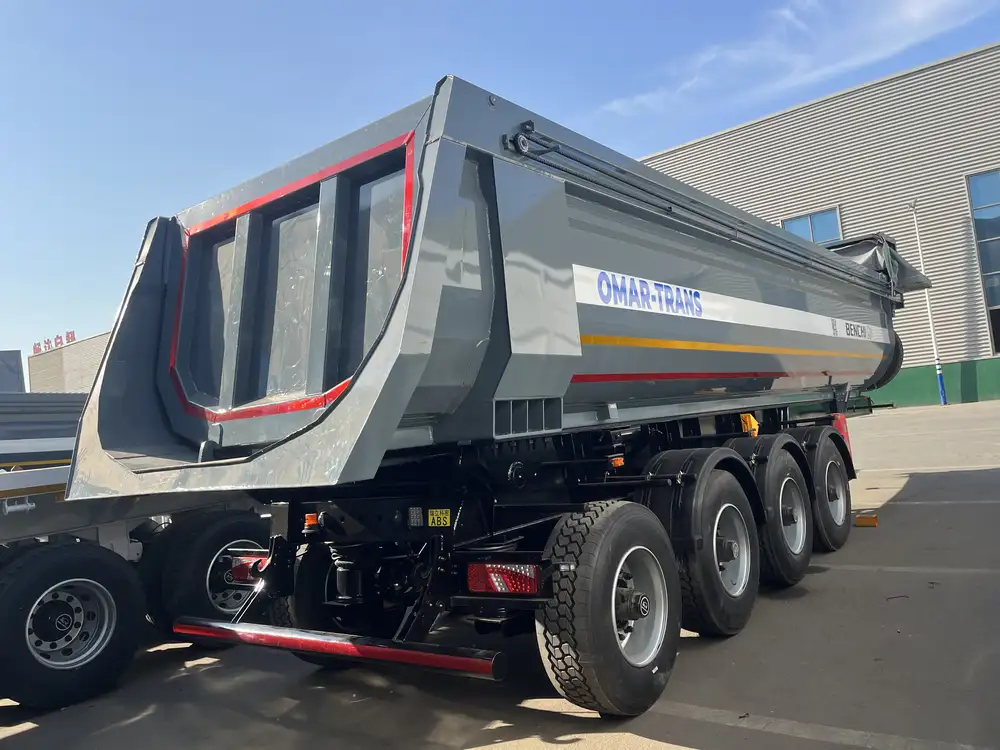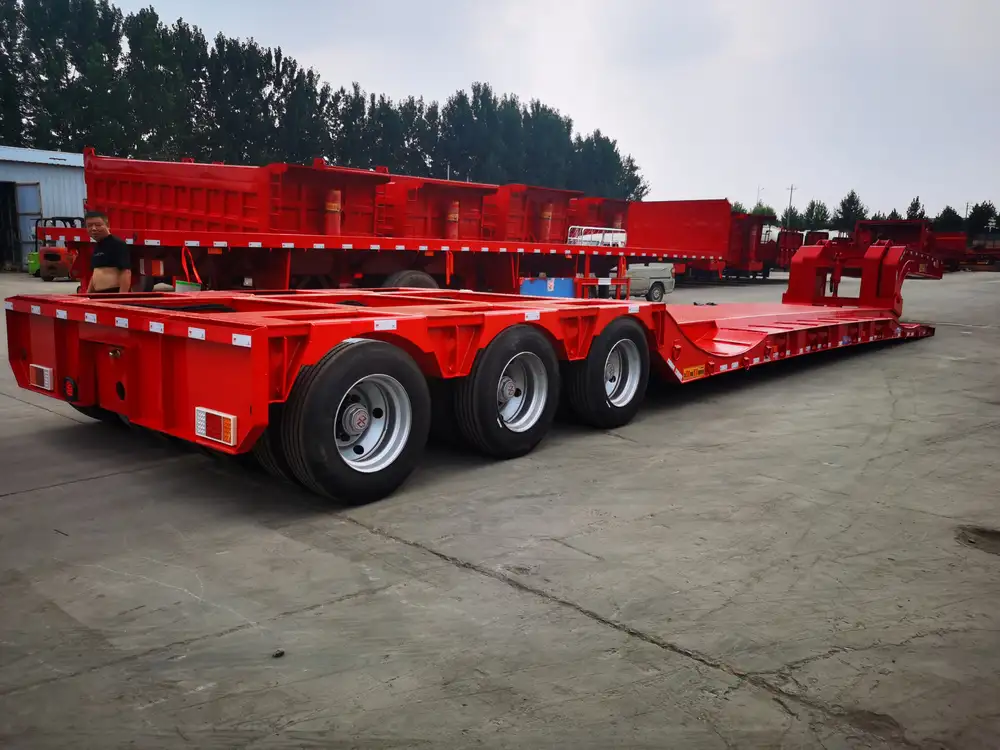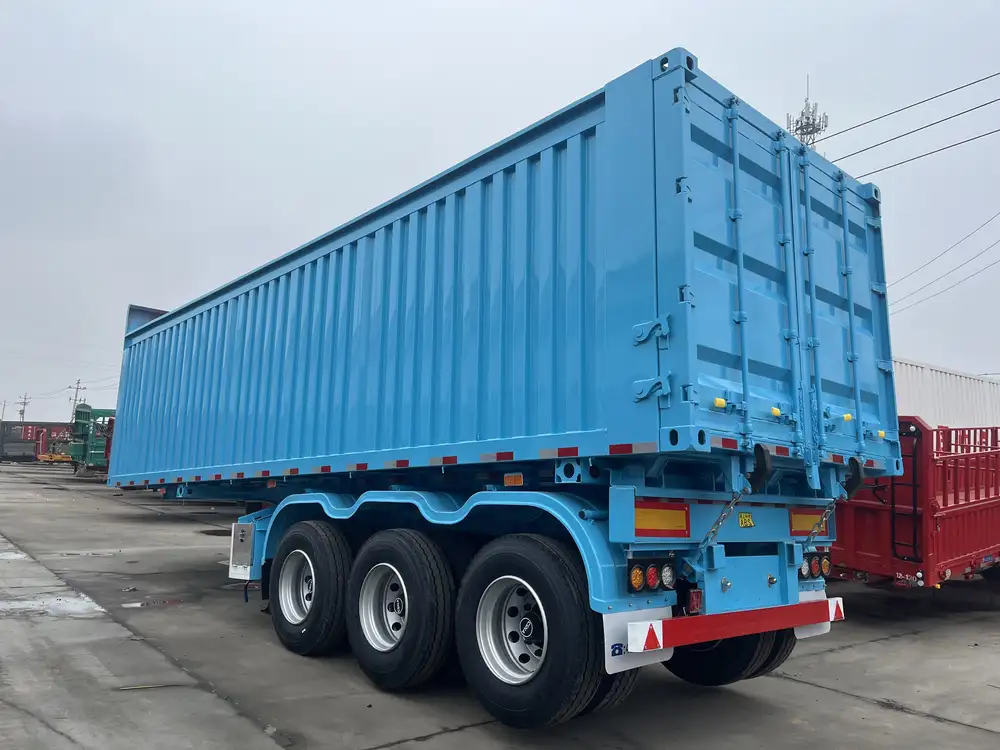When navigating the logistics and transportation industry, purchasing a semi-trailer is a significant investment requiring thoughtful consideration. Used semi-trailers present a practical option for businesses seeking cost efficiency without compromising quality. This guide aims to provide an in-depth exploration of the costs associated with purchasing a used semi-trailer, factors influencing pricing, and essential tips for prospective buyers.
Understanding the Market Value of Used Semi-Trailers
Price Range Overview
The price of a used semi-trailer can vary considerably based on several factors. As a general rule, buyers can expect to pay anywhere from $3,000 to over $50,000, depending on the specifications and condition of the trailer. Here’s a breakdown of typical price ranges for different types of trailers:
| Type of Semi-Trailer | Price Range |
|---|---|
| Flatbed Trailers | $3,000 – $25,000 |
| Dry Van Trailers | $5,000 – $30,000 |
| Refrigerated Trailers | $10,000 – $50,000 |
| Tanker Trailers | $10,000 – $45,000 |
| Livestock Trailers | $5,000 – $20,000 |
This table illustrates that while some trailers are more economical, others command a premium due to their specialized features and conditions.

Influence of Age and Condition
The age and physical condition of the semi-trailer play a crucial role in determining its price. A well-maintained, relatively new trailer with minimal wear may cost significantly more than an older unit showing signs of heavy usage. Consideration of the following factors can help gauge a trailer’s value:
- Mileage: Just as with vehicles, lower mileage typically translates to less wear and tear, which can command a higher price.
- Maintenance History: Trailers that have been well-maintained with documented service histories usually command better pricing.
- Physical Inspection: Check for rust, structural damage, and tire condition. These factors can affect both safety and performance.
- Upgrades and Modifications: Trailers equipped with modern features such as advanced braking systems, lift gates, or additional insulation may be priced higher due to their enhanced functionality.
Where to Find Used Semi-Trailers
Online Marketplaces
The internet offers a vast selection of platforms where buyers can search for used semi-trailers. Here are some popular options:
- TradeMachinery.com
- TruckPaper.com
- Ebay Motors
- Craigslist
- Facebook Marketplace

Dealerships vs. Private Sellers
When choosing where to purchase, buyers face a decision between dealerships and private sellers. Each option presents its own advantages and disadvantages:
| Factor | Dealerships | Private Sellers |
|---|---|---|
| Warranty Options | Often provide warranties | Rarely offer warranties |
| Financing Availability | May offer financing options | Typically do not offer financing |
| Inspection Assurance | Trailer likely inspected and certified | Varies; may rely on self-inspection |
| Negotiation Power | Less flexible on price | Often more room for negotiation |
Determining Your Specific Needs
Trailer Type and Purpose
Understanding the intended use of the semi-trailer is paramount. The right choice depends largely on the freight type and industry requirements. Here are some common uses for various trailer types:
- Flatbed Trailers: Ideal for transporting oversized or irregularly shaped freight.
- Dry Van Trailers: Common for general freight and is protected from weather elements.
- Refrigerated Trailers: Essential for transporting perishable items that require a temperature-controlled environment.
- Tanker Trailers: Designed for liquids, often used in the oil and gas industry.

Capacity Requirements
Every business has specific load capacity requirements. Knowing the average weight of your cargo and the volume can help narrow down the options. Standard semi-trailer dimensions typically include:
- Length: 28 to 53 feet
- Width: 8.5 feet
- Height: 13.5 feet (maximum for most highways)
Understanding your cargo’s size and weight can assist in selecting a semi-trailer that maximizes payload while staying within legal limits.
The Buying Process: What You Should Know
Step 1: Research and Comparison
Conduct thorough research before committing to a purchase. Use online marketplaces to compare prices of different models and sellers. Pay close attention to aspects like:
- Age and Condition: Review ad descriptions and photos critically.
- Seller Reviews: Trustworthiness and credibility of the seller are paramount, so seek out reviews or testimonials where possible.

Step 2: Budget Considerations
Establish a budget that considers not just the purchase price but also additional costs, such as:
- Taxes and Licensing Fees: Ensure to factor these into your budget as they vary by location.
- Insurance Costs: Necessary expense but can vary based on historical claims.
- Maintenance and Repair Costs: Older trailers may require immediate repairs that should be anticipated.
Step 3: Inspection and Test Drive
Before finalizing any deal, conduct an in-person inspection and test drive of the semi-trailer. Here are key aspects to check:
- Brakes and Lights: Inspect functionality, wear, and compliance with regulations.
- Floor and Frame Integrity: Look for signs of rot or damage that could signal a deeper issue.
- Tires: Assess tread depth and condition to avoid immediate replacement costs.
Step 4: Price Negotiation
Be prepared to negotiate the price. Knowledge of the market rates and comparable trailer prices puts you in a strong position. Use findings from your research as leverage during discussions.

Protecting Your Investment
Essential Paperwork
Once you decide to buy a used semi-trailer, ensure the seller provides all necessary documentation:
- Title Transfer Documents: Verify the ownership and clear title status of the trailer.
- Maintenance Records: A log of repairs and upkeep can provide additional insight into the trailer’s reliability.
- Inspection Records: Any certifications or inspections should be reviewed for compliance with current regulations.
Insuring Your Trailer
Securing proper insurance on your semi-trailer is essential. Most states legally require insurance for commercial vehicles. Key coverage types to consider include:
- Liability Insurance: Mandatory coverage for accidents causing injury or damage.
- Cargo Insurance: Protects against losses related to freight being transported.
- Comprehensive Coverage: Covers a variety of potential losses, including theft or weather damage.

Conclusion: Making Informed Purchasing Decisions
Navigating the used semi-trailer market can be complex yet rewarding when approached systematically. Understand the pricing landscape, identify your needs, and conduct thorough inspections to secure the best deal.
By being well-informed and prepared, buyers can confidently make decisions that meet their operational needs while ensuring their investments contribute positively to their bottom line.
Key Takeaways
- Expected Price Range: Generally, prices range from $3,000 to over $50,000 depending on type and condition.
- Marketplaces: Explore online platforms and local dealerships for a comprehensive search.
- Inspect & Test: Always conduct thorough inspections and consider test driving before making a purchase.
- Proper Paperwork: Ensure all essential documents are provided to protect your investment fully.
By utilizing this guide, you will be well-equipped to navigate the intricacies of purchasing a used semi-trailer that best serves your operational demands and budget considerations.



